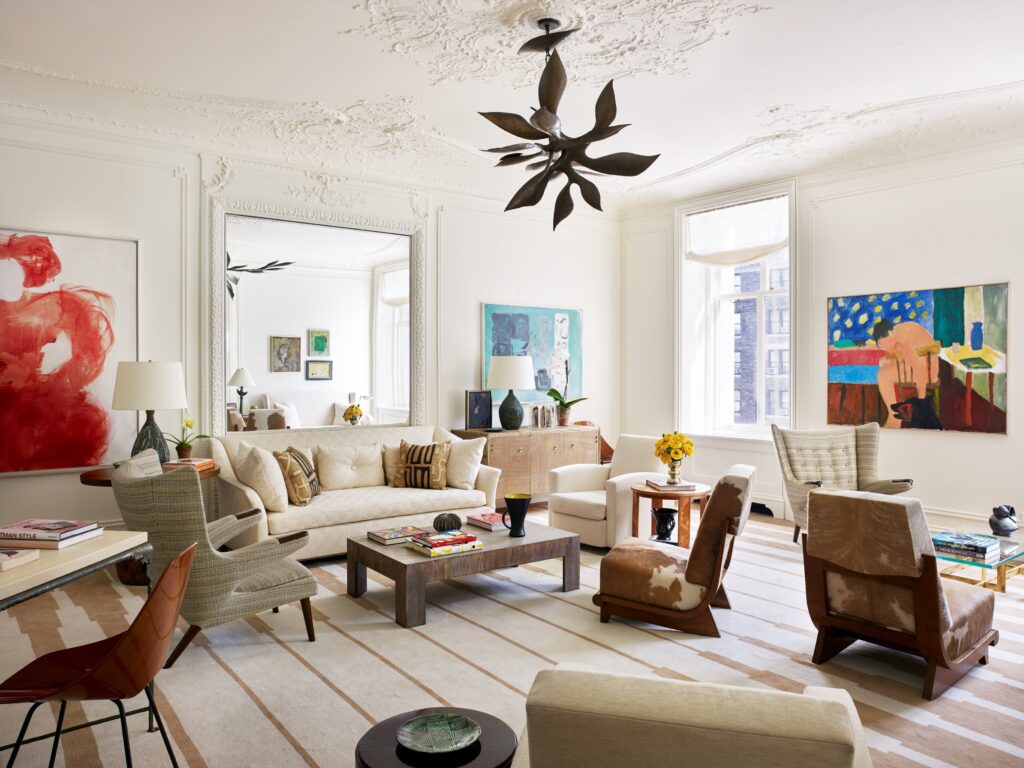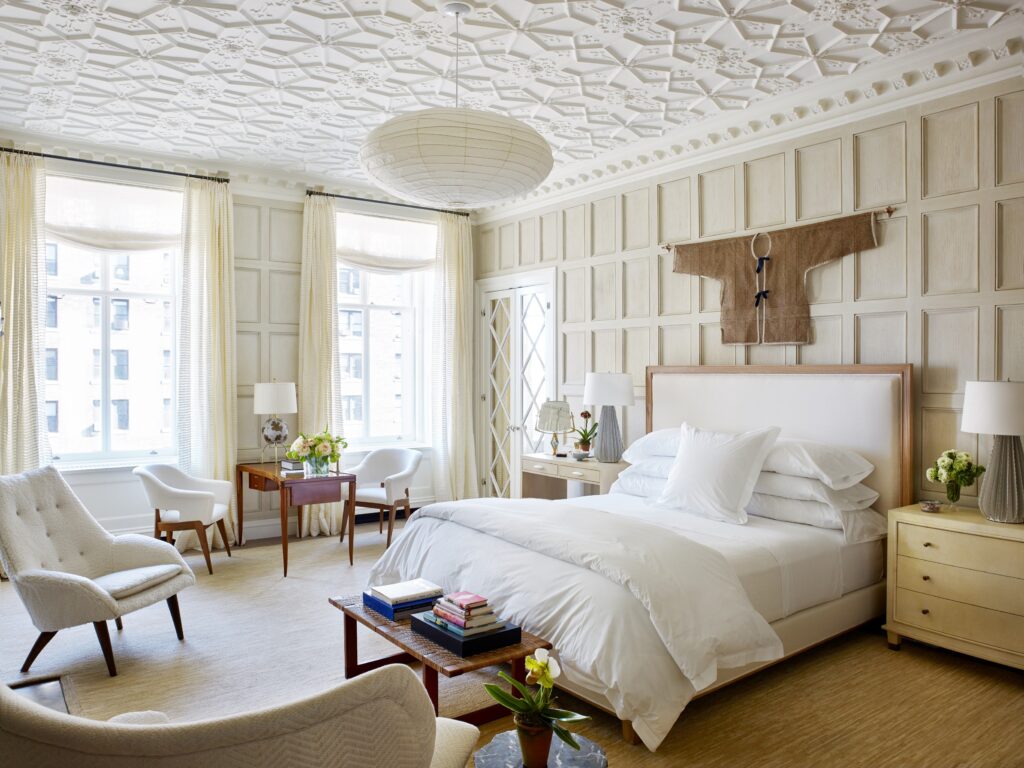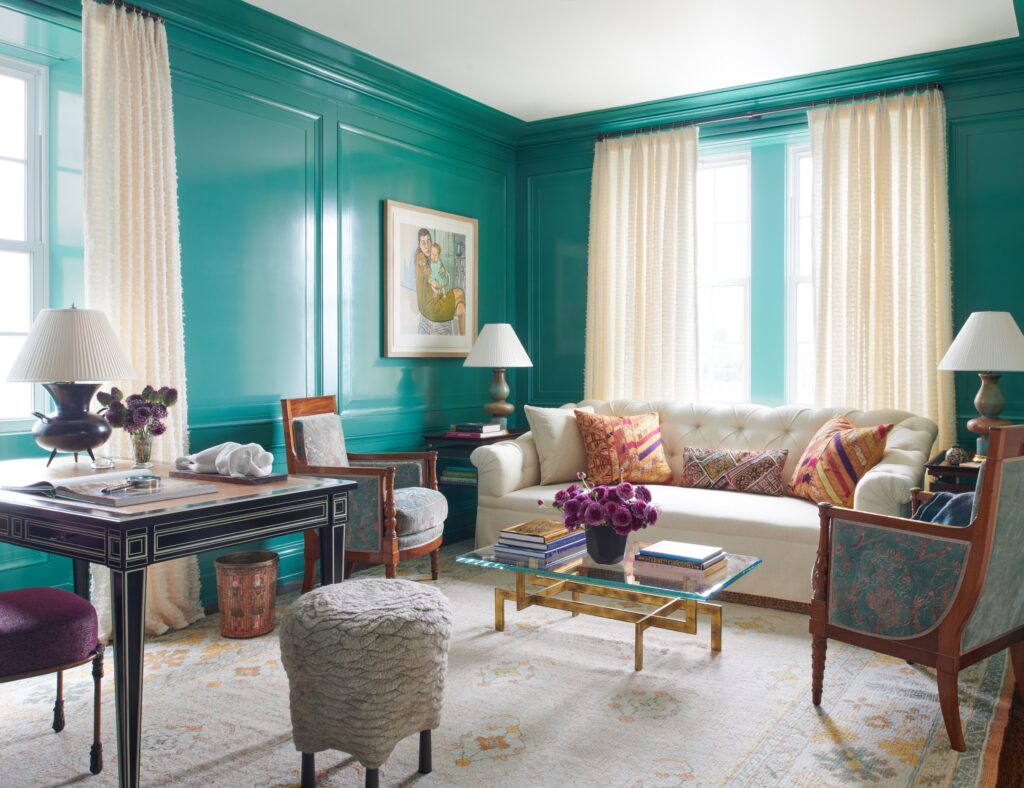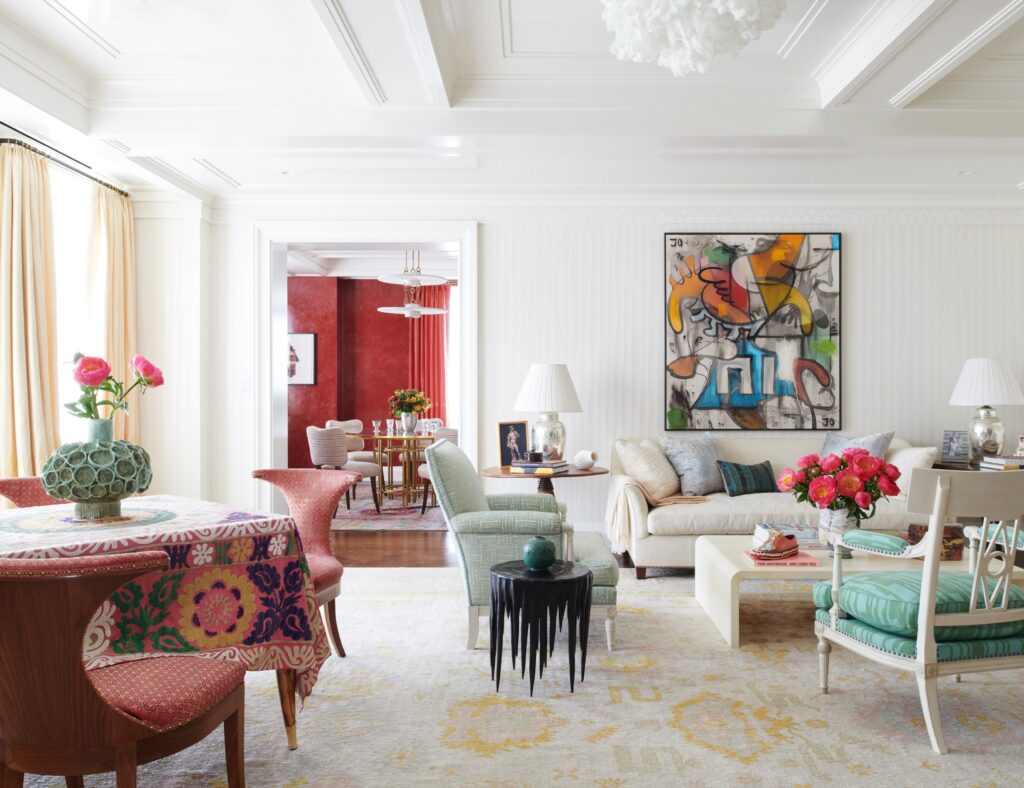
“Brian is one of the most elegant, thoughtful, and informed humans I’ve had the pleasure to spend time with. One peek into his apartment (or office), and you see that he’s a true collector—and a collector of everything: paintings, sculpture, furniture, lighting, rugs, books. His excitement for and knowledge about every object is infectious. While we bonded over 18th-century French furniture and Chinese porcelain 15 years ago, we now can’t stop talking about Les Lalanne, William Copley, and Alma Allen, among many others. Brian, they broke the mold with you. Truly.”
—Edith Dicconson, Senior Director, Kasmin Gallery
Award-winning interior designer Brian McCarthy, my first guest for this season’s Interior Design: The Legends, exemplifies the notion that interior design is a profession that one must practice over the course of a lifetime to fully perfect. Certainly there are plenty of young designers doing interesting and important work, but an undeniable sharpness, confidence, and precision can be detected in the skills of professionals who have engaged with the field for a very long time. These are the superstars, and McCarthy is one of them. His high-profile projects reflect a finely honed professional wisdom, achieving a level of refinement and elegance that few can. He has been in the world of interiors long enough to see trends rise and fall, and along the way he’s discovered the secret to timelessness. “Good interiors,” he told us, “last for many many years.”
McCarthy’s success is rooted in his implacable inquisitiveness. He goes to the ends of the earth to examine exotic stones at the quarry site, to visit remote ateliers specialized in spectacular handwoven textiles, and to explore the world’s finest gardens. He never misses important gallery exhibitions and is thus highly conversant in the state of the art and markets at any given moment. He frequents museums and historic homes and devours biographies of artists and designers. Such deep knowledge of global visual culture straddles the line between the practical and the academic, and the inspiration he draws from it is infectious.
McCarthy grew up in Bethesda, Maryland, and studied interior design at Pratt. His first job out of school was with New York firm Parish-Hadley, considered at the time to be an international industry leader. It was there that McCarthy forged the foundation of his professional approach. While he has since moved from décor to design, he credits Albert Hadley, his mentor, for instilling strong ethics and expert skills—as well as for supporting his decision to leave the firm and open his own practice in the early 1990s.
Architecture matters, McCarthy told us. When it comes to creating interior programs, the spirit of the building, its “bones,” are the most substantial point of departure. Meaningful dialogues between exteriors and interiors ensure seamless continuity and powerful narratives. Intensifying the urban experience and preserving any and all details that express the identity of the place prove to be a successful formula. Two of the projects presented in the talk, situated in landmark historic buildings in Manhattan, manifest this approach.
McCarthy also begins every project with a dream, because he creates dream houses for clients who care about spaces they live in. They are typically willing to do what it takes to ensure greatness, investing not only money but also time, patience, and enormous efforts. They understand the power of living with exceptional objects and quality, eager to commission ambitious works from living designers and support the evolution of contemporary design culture. ‘They want to be patrons,” McCarthy explained, “and they have that mindset, because they love art, design, and culture and want to share that passion with family and friends.” His clients typically wish to remain anonymous, but there is one celebrated identified project, still synonymous with McCarthy’s oeuvre. In 2005, he was invited by the US Ambassador to the Court of Saint James Robert H. Tuttle to design the private quarters and refurbish the State Rooms in Winfield House, the official residence of the US Ambassador in London.
McCarthy is brilliant when it comes to furnishing, because he has a passion for visual culture, a belief in the power of objects to act as engines of self expression, and an incredible eye for scale, proportions, and placement. One of the most important skills for any 21st-century interior designer is to create a smooth continuous flow. McCarthy combines the old and the new with ease, crafting unique and personal yet harmonious combinations. In his interiors, mid-century Italian, contemporary, and antique objects live in peace alongside radical ceramics and exquisite rugs. The trick, he said, is to start with one important, great piece that sets the tone and dominates the space; everything else comes together naturally. His own home in midtown Manhattan, which he shares with his partner Daniel Sager, serves as a model.
To a question from the audience as to who his three favorite living furniture designers are, McCarthy emphasized that he seeks out originality—that he wants to see something that has not been done before—because it is the key to achieving greatness. He applies the same principles when evaluating art of the past. His three greatest are: Joseph Walsh, the Irish maker known for innovating new methods for crafting bentwood furniture; Misha Kahn, the New York-based darling of the collectible design world who invented new typologies of furniture that are completely liberated from conventions; and Patrice Dangel, the Parisian artisan who utilizes traditional French methods to create contemporary furniture and lighting (and whose work is never omitted from McCarthy’s projects). “Apart from being friends,” London dealer Adrian Sassoon has told me, “Brian and I ‘get’ each other for another reason: we both look at contemporary works of art with the same mentality as looking at historic ones; the same criteria applies.”
What did we learn from Brian McCarthy by the end of his talk? That interiors of today cannot be defined by preexisting molds or preconceived interpretations of styles; rather the hallmark of great interiors is the layers of values crafted by the highly skilled designer. Only by constantly pushing the envelope, overcoming obstacles, and resolving new and complex problems can a project’s full potential be reached. This article appeared today in Forum Magazine.
Interior Design: The Legends, a new series with Christie’s Education. Every Wed at 12:00 EST.







